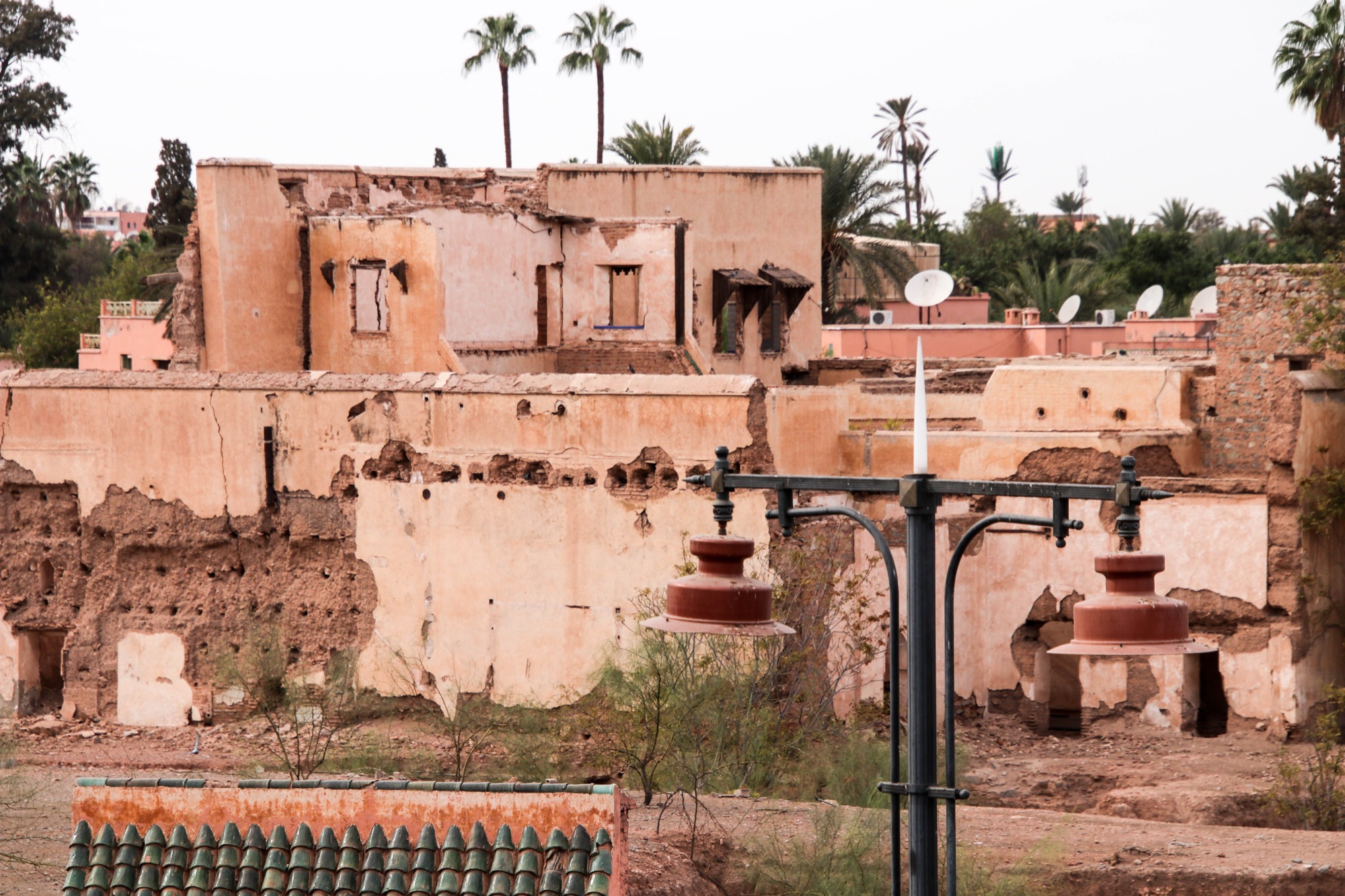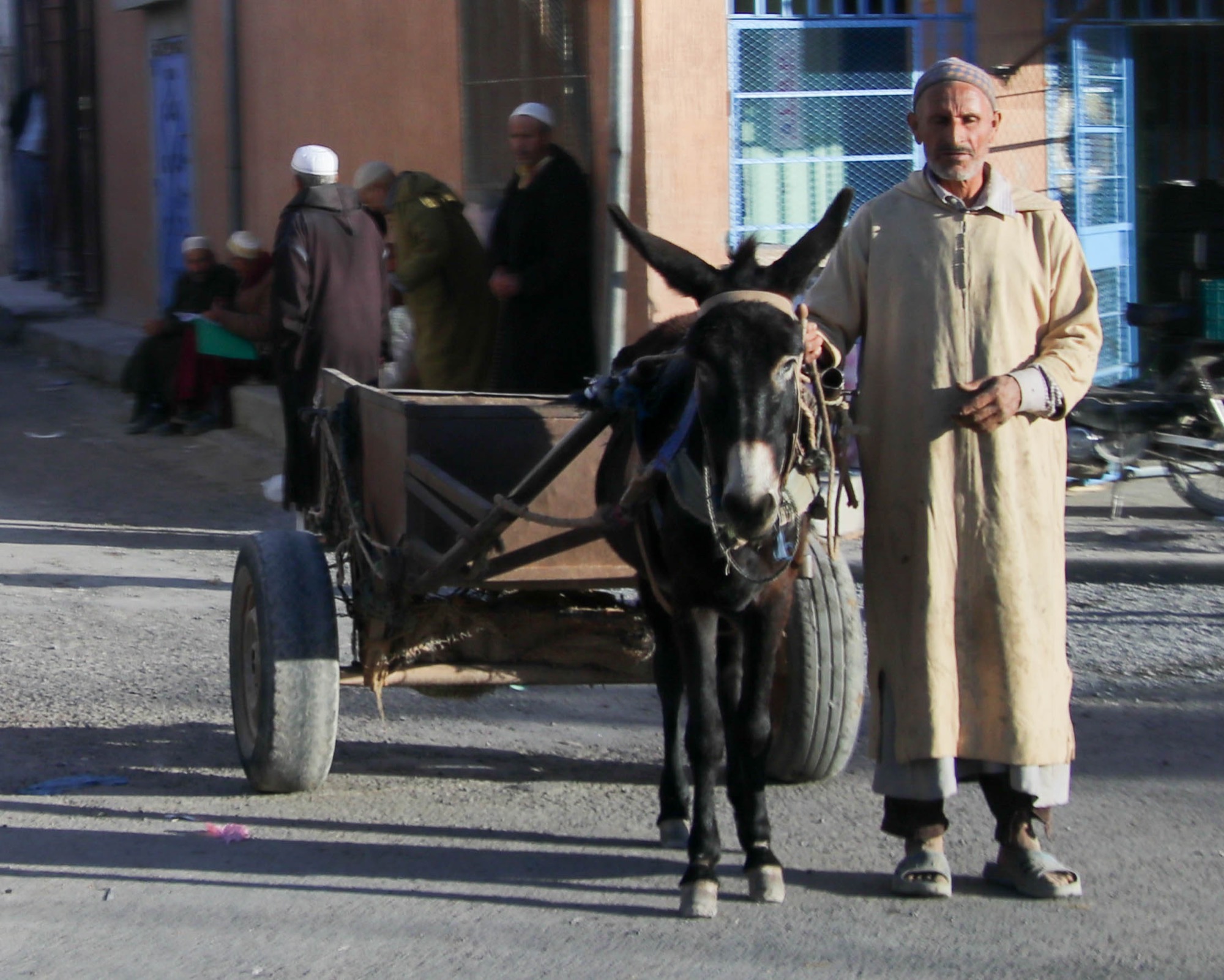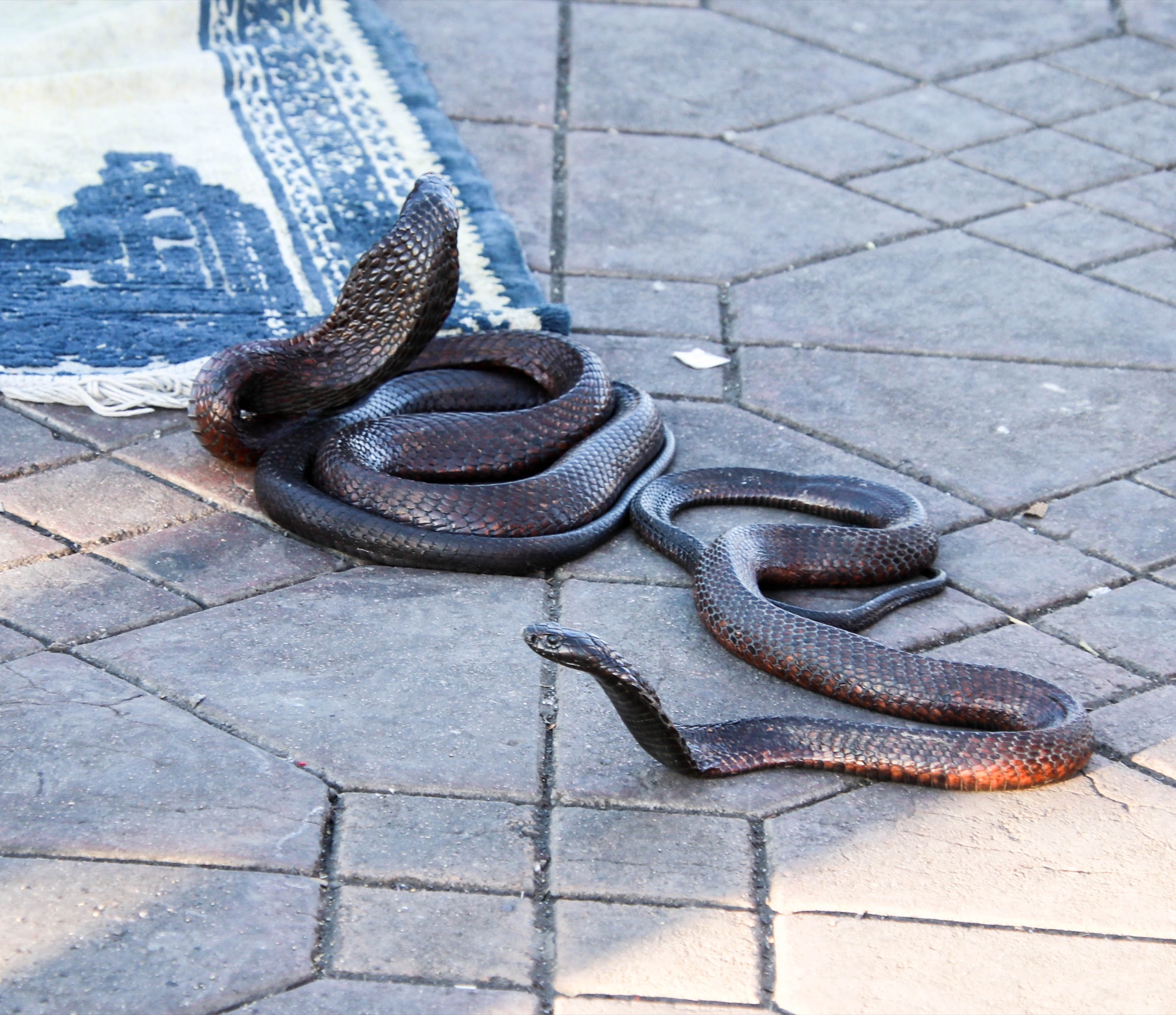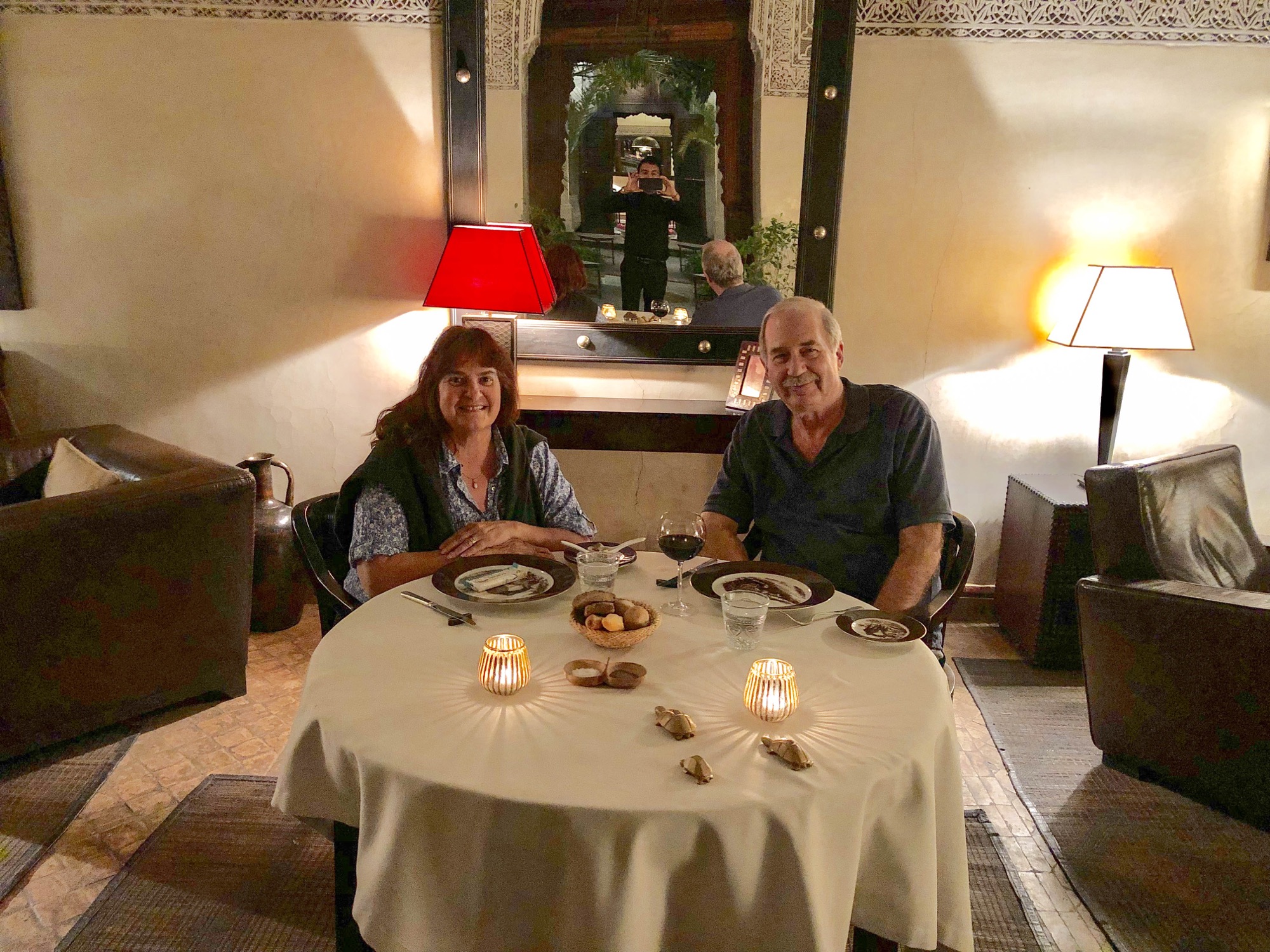Marrakesh has been nicknamed the "red city" because when the city was built up in the early 12th century the city walls and many of the buildings were constructed from red sandstone. The city walls, which were built in the 12th century as fortifications to protect the city, are 12 miles long and surround the medina.
There are lots of fist sized holes in the ramparts that surround the city and some were even being utilized for shelter by the local bird population. It turns out, however, that the holes are there in order to hold scaffolding when the walls undergo restoration.




















































